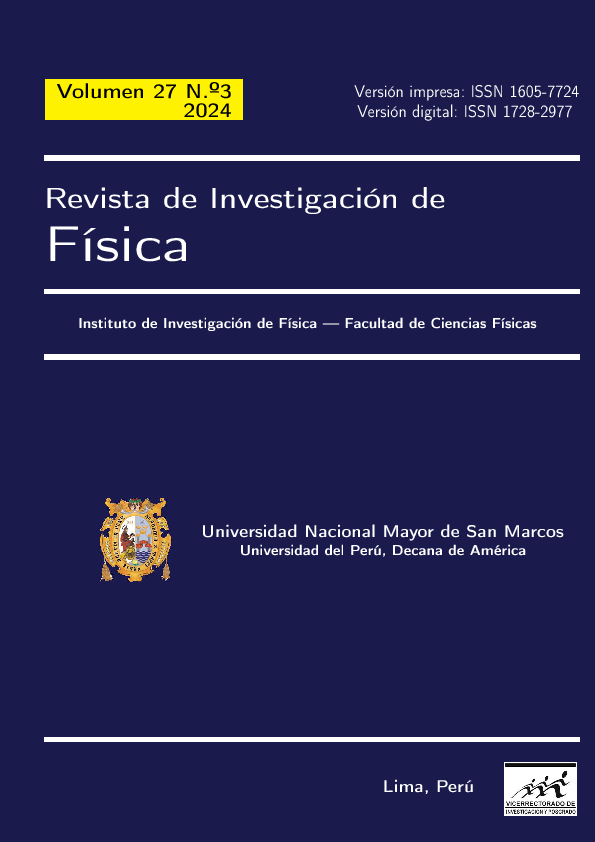Spatial and temporal variability patterns of sea surface temperature in the Equatorial Pacific
DOI:
https://doi.org/10.15381/rif.v27i3.27369Keywords:
Covariance, modes, SST, eigenvalues, eigenvectorsAbstract
In this research, Empirical Orthogonal Function (EOF) analysis is applied to reduce the number of variables in a sea surface temperature (SST) dataset to a second dataset containing a much smaller number of variables. The condition is that these new variables retain the maximum possible fraction of information from the original dataset. This second dataset is derived by finding the eigenvalues and eigenvectors of the covariance matrix. The objective is to identify the most significant spatial and temporal patterns (principal components) of SST variability in the Equatorial Pacific Ocean (Latitude: 30°N - 30°S, Longitude: 140°E - 70°O) and subsequently associate these patterns (or modes) with phenomena such as the El Niño-Southern Oscillation (ENSO). Finally, to validate the estimated patterns, they are compared with those obtained by national and international institutions.
Downloads
Published
Issue
Section
License
Copyright (c) 2024 Edward Alburqueque, Joel Rojas

This work is licensed under a Creative Commons Attribution 4.0 International License.
THE AUTHORS RETAIN THEIR RIGHTS:
a. The authors retain their trademark and patent rights, as well as any process or procedure described in the article.
b. The authors retain the right to share, copy, distribute, perform and publicly communicate the article published in the Revista de Investigación de Física (for example, place it in an institutional repository or publish it in a book), with an acknowledgment of its initial publication in the Revista de Investigación de Física.
c. The authors retain the right to make a subsequent publication of their work, to use the article or any part of it (for example: a compilation of their works, notes for conferences, thesis, or for a book), provided that they indicate the source. of publication (authors of the work, journal, volume, number and date).






